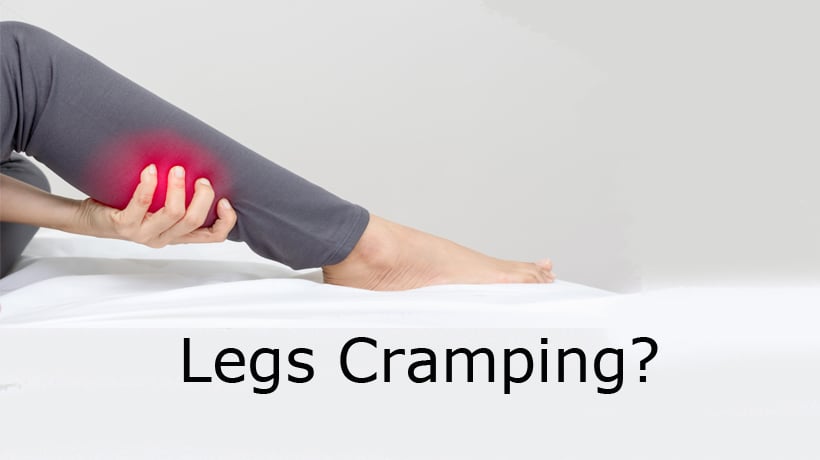There are few things more unpleasant than being jolted out of sleep by a furiously cramping calf or quad muscle. Yet these annoying spasms are extremely common. Luckily, they are easily treatable and minor. Here is everything you need to know about that troublesome Charley Horse.
First, there are two types of leg cramps: idiopathic and secondary leg cramps. Secondary leg cramps are a symptom of a health condition such as liver disease, certain medications or even pregnancy. Idiopathic cramps occur for no reason. Scientists have several theories about the causes of idiopathic cramps, but there is no concrete explanation for their cause. Secondary leg cramps need to be addressed by dealing with the underlying cause, but idiopathic cramps can usually be treated by exercising the problematic muscles. There are several different factors that can lead to leg cramps.
Overuse when exercising
Once your muscles have cooled down, it’s common to experience leg cramps. An easy way to prevent this is to make sure to stretch after (not just prior) working out. Blowing off the cool-down may seem like no big deal, but you can pay for it in soreness and cramping. Invest in a foam roller and a tennis ball and treat yourself to 5 to 10 minutes of rolling out those stiff muscles.
Dehydration
In winter weather, dryness is a perpetual annoyance, and you are particularly susceptible at night. For some, dehydration can lead to a drop in salt levels which can, in turn, lead to leg cramps. Make sure you are drinking plenty of water, even before bed. Yes, it can be a minor pain to have to get up in the middle of the night to pee, but it’s a bigger pain to wake up due to leg cramps.
Shortened tendons
Tendons bind muscles to bone and if your tendons become too short they can affect the muscles, causing them to cramp. You don’t want to overstretch your tendons but it is important to keep them flexible, especially because they naturally shorten as we age. As opposed to stretching for muscle flexibility, tendons respond better to ballistic stretching. Just like the importance of stretching after exercise, ballistic stretching is important before a workout as a way to warm up the body and prepare your muscles and tendons to engage properly. Keeping your tendons elastic and responsive will help to prevent leg cramping.
Incorrect footwear
Wearing heels day after day can be murder on your legs. Heels pitch your weight forward, making your calf and quad muscles work harder to stabilize you as you walk and cause your tendons to shorten (see above). Unsupportive shoes like ballet flats can allow you to pronate (walk pigeon-toed) or supinate (walk duck-footed) your feet, which also causes strain on your tendons and muscles leading to leg cramps. Try to wear supportive shoes and if you already know you have a tendency to pronate or supinate, find inserts for your shoes that can correct these imbalances.
Medication
Certain medications can cause leg cramps in some people. Possible culprits include diuretics which are used to treat high blood pressure, heart failure and kidney disease, statins or nicotinic acid which is used to treat high cholesterol. Other medications include Raloxifene, which is used to treat osteoporosis, and nifedipine, which is used to treat angina. If you are taking any of these medications and are suffering from leg cramps, speak to your doctor.
Restricted blood flow
The way you’re sleeping may be causing an improper circulation in your legs leading to cramps. Make sure to keep your sheets and blankets loose so they don’t get entangled in your legs and form an unintended tourniquet. If you sleep on your back, keep your toes pointing upward—resting the soles of your feet against a pillow can help keep them in the correct position. Dangle your foot over the edge of the bed if you sleep on your belly—that way your feet will be relaxed which will help prevent your muscles from cramping.
If none of the above are causing your cramps you may be a victim of idiopathic cramps. Here are some stretches you can do to help relieve your symptoms while your muscles are spasming and before an episode occurs:
- Massage the affected area. If your quad is cramping, apply long downward strokes with the heel of your hand to encourage the muscle to relax.
- Stretch in the opposite direction. For example, if your toes are cramping together, lift your foot upward and attempt to spread the toes outward.
- Use gravity to your advantage. If your calf is cramping, standing and allowing gravity to relax the calf muscle downward will ease the pain. Walking around on your heels can also aid in muscle relaxation.
- Apply heat. Wrapping the affected muscles in a heat pack or taking a warm bath are good ways to calm spasming muscles.
- Preventative stretching. If you know you are prone to leg cramps right before bed, perform a calf and quad stretch. Stand about a foot away from a wall with your feet staggered, soles flat on the ground. Lean forward and place your hands on the walls, hold for about five seconds. Release and switch sides. For the quads, hold one foot behind you, bringing your heel as close to your butt as possible. Keeping your pelvis tilting forward, hold for about five seconds and then switch legs.
- Replenish your minerals. The old advice about eating a banana for cramps is still true. Bananas, coconut water and leafy greens are all high in potassium. Consider adding a multivitamin with calcium, magnesium and zinc if you aren’t getting enough in your daily diet.
Leg cramps are usually not a cause for concern, but consult a medical professional if symptoms persist, last longer than 10 minutes or interfere with your quality of life.
Source:
https://www.nhsinform.scot/illnesses-and-conditions/muscle-bone-and-joints/conditions/leg-cramps



